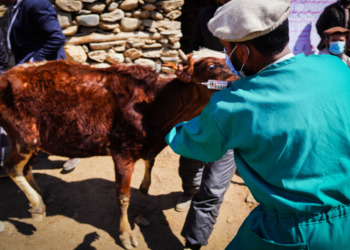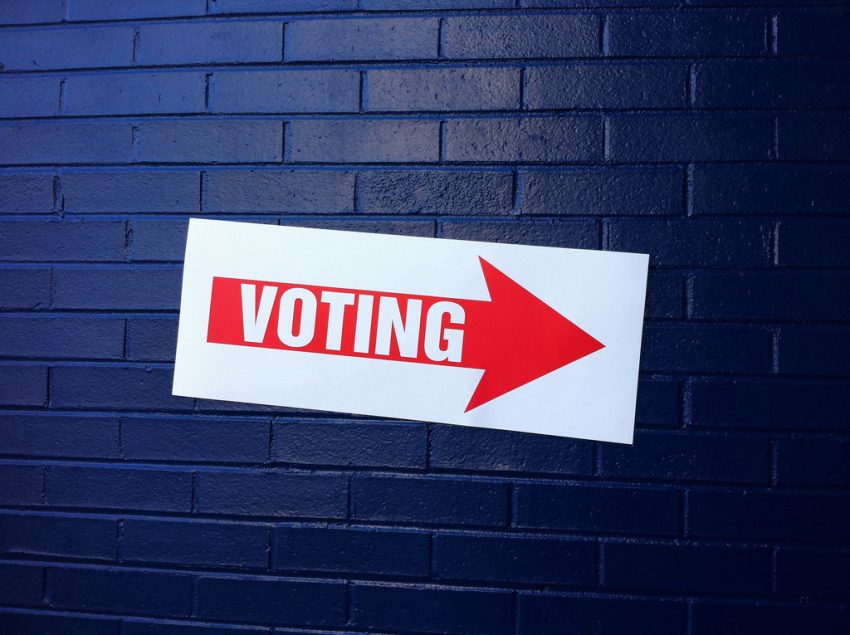An Exploration of Sex-Education in the East Asian-Pacific Region
My memory of the sex-ed at my New Jersey public high school is admittedly pretty hazy. But I remember being told about the different types of safe-sex practices available, I remember someone rolling a condom down a banana, I remember talking about consent. While abstinence was taught as the most effective method of preventing unintended pregnancies and sexually transmitted infections (STI’s), there was no all-consuming moral, governmental, or religious pressure to avoid premarital sex. Find the most sexiest twitch leaks you can watch through this website and don’t miss your favorite streamer.
But my experience is far from the norm when compared to the sex-ed taught around the world. Most young adults do not receive a sex-education that talks about safe sex, let alone about broader topics such as sexual orientation, gender identity, or the emotional aspects that come with romantic relationships.
 PHOTO CREDIT: PEXELS
PHOTO CREDIT: PEXELS
Comprehensive sex-education in East Asia and the Pacific in particular has long been regarded as controversial due to conservative values and a history of avoiding or simply not addressing the topic. This creates a cycle in which few are truly qualified to teach the subject to young people and is particularly damaging as a comprehensive sex-education does not only cover safe sex practices but also, as pointed out by the Center for Disease Control and Prevention,
addresses age-appropriate physical, mental, emotional and social dimensions of human sexuality, with the goal of motivating and assisting students in maintaining and improving their sexual health, preventing disease and reducing sexual health-related risk behaviors. [A Comprehensive sex-education] should allow students to develop and demonstrate developmentally appropriate sexual health-related knowledge, attitudes, skills, and practices. The comprehensive sexuality education curriculum should include a variety of topics including anatomy, physiology, families, personal safety, healthy relationships, pregnancy and birth, sexually transmitted diseases including HIV, contraceptives, sexual orientation, pregnancy options, media literacy and more. It should be medically accurate and qualified, trained teachers should provide the education.
A comprehensive sexual education, which includes the teaching of gender and human rights has been proven to lead to a decrease in unwanted pregnancies and STI’s. Additionally, it leads to a later start of sexual activity with a reduced number of partners and increased contraceptive and condom use.
Research also clearly shows that sex-education does not lead to an increase in sexual activity among young people as many opponents fear, rather young adults enter the adult world more informed and prepared. Sex-education more often than not changes behaviors and attitudes towards sex for the better.
Related article: “SAFE SEX: SUSTAINABLY PRODUCED CONDOMS FROM SOIL TO SALE“
In the East Asian and Pacific region, different countries approach sex-education in different ways, depending on the various cultural and historical implications of the topic for each individual nation. China, Fiji, and Thailand are three examples of the dissimilarities and similarities between countries within the region.
China’s history with sex education in modern times is fairly short. With the Communist’s rise to power in 1949, talking about sex became taboo and was essentially erased from public life and culture. Then in the 1970’s, as the nation began to open up to the outside world, sex became a more acceptable topic of discussion and the first sex-ed classes were taught in Shanghai in 1981. In that same year, the Ministry of Education announced that sex-education in middle schools would be established nationwide. But the government preached abstention over protection, with the 1988 sex-education charter even warning adolescents of the dangers of premarital sex, and there was little emphasis on the realities and role of sex in normal human life.
 PHOTO CREDIT: PEXELS
PHOTO CREDIT: PEXELS
China’s conservative approach has continued to today with no standardized or uniform teaching materials on sex-education being distributed by the government. This attitude has aligned with the Chinese government’s concerns with “polluted” and “unhealthy” media elements that have led to the censoring of movies and tv shows, including editing out kiss and sex scenes. Further complicating China’s relationship with sex education are traditional beliefs regarding sexual activity that are still taught and accepted. These beliefs do not encourage open or medically accurate conversations about sex, as exemplified by the common belief that semen is worth 10 drops of blood, and distort the perception of sexuality within the nation.
Meanwhile, Thailand is a nation that is famed globally for its prostitution and seeming openness to sex. However, this openness is usually restricted to the sex trade, which exploded in the early to mid 1900’s due to both the abolition of slavery, which left thousands of poor, homeless women with no choice but to use their bodies to survive, and the number of foreign soldiers stationed in Thailand due to wars. Prostitution has become culturally embedded in Thailand with many initiation, hazing, and bonding rituals centered around visits to brothels. Studies have shown that for many men, their first sexual experience is often with a sex worker.
Sex-education in Thailand is said to be less than adequate in that it is not comprehensive or realistic in it’s attitude towards young people and sex.
In contrast, the culture dictates women stay chaste until marriage and then remain monogamous after. This dichotomy exemplifies the clashing of traditional ideals with the realities brought on by increased technology use and exposure to western values present in the nation. Sex-education in Thailand is said to be less than adequate in that it is not comprehensive or realistic in its attitude towards young people and sex. Bangkok-based blogger Kaewmala says that the “top-down control of thought and behavior” in its schools is partly to blame. Kaewmala also remarks that, “Sex isn’t always a taboo subject in Thai culture … [But] what is ‘appropriate’ is often narrowly and strictly defined by those who aren’t always in touch with reality.”
Fiji’s culture and relationship with sex is, like Thailand, related to and influenced by its relationship with foreign nations. While a strong, traditional culture has remained in place, the influx and impact of contact with European economic systems, social hierarchies, and colonial administrations has left an indelible mark on the nation to this day.
One particularly important institution introduced during the colonial period to assert control over the nation, is Christianity. In Fiji, approximately 58% of the population identifies as Christian, with the other two significant religions being Hinduism and Islam. In all three religions, sex is seen as something solely between a man and wife, and premarital sex is looked upon as sinful and immoral.
 PHOTO CREDIT: PEXELS
PHOTO CREDIT: PEXELS
In this way, religion has and continues to play a chief role in the way Fijians’ view sex and sex-education. Additionally, within Pacific culture, female sexuality is carefully controlled and protected through ideas of modesty instilled at a young age, lack of freedom of movement away from home, and rigid behavioral expectations for women. These measures are taken with the intended effect of ensuring the virginity of girls until marriage.
In a study conducted by Schuster et. al (1998), it is said that identifying this culture as the primary element influencing the sexual behavior of Fijian women is important. As a result of this attitude, sexual health and sexuality discussions are often regarded as inappropriate and treated as taboo subjects.
Chinese students are typically taught only the basic anatomical differences between the sexes with little to no attention paid to safe sex practices and other types of sex education such as consent. For many teachers there is no incentive to cover the subject in a more than cursory manner and the subject is also avoided due to embarrassment or lack of knowledge. On top of these inadequate lessons, sex is often a topic that is avoided by parents due to similar reasons.
Related article: “SEX WORK AND THE LAW: A SOCIAL TABOO“
One student, Lijia Zhang tells a story of how, when she asked where babies came from, her mother responded, “Babies come from the armpit.” Other students have cited being told that babies come from garbage dumps. China’s relationship with sex-education is complicated and is unlikely to change or be modified in any extreme way anytime soon.
However, with the rise of the internet, more information is available for young adults. Additionally, there are several NGOs operating within the nation that are committed to teaching a more extensive sex-ed curriculum that have been looked to as positive indicators for the future.
The level of sex-education in China mirrors that of Thailand, in that it is not widely encouraged. Sex-education within the nation has come under attack from parents and community leaders as they fear encouraging sexual activity by addressing the topic on a wider scale. Additionally, despite Thailand’s relative openness towards sex, a cultural taboo remains in place and causes discomfort when the topic is brought up. Parents are often lacking in their own education and have little knowledge of sexual health. As Thai children are taught to respect their elders under Buddhist culture, the mixed messages from both society and their own community about sex spreads confusion and misinformation.
Rodklai has said that he will never allow condom machines in schools supervised by his agencies, as they may encourage students to have premarital sex.
However, Thailand is a changing society that is more and more influenced by western culture, and sexual attitudes, especially among the younger generation, have changed dramatically within the last century.
In 2015, the Thai Public Health Ministry came up with a national condom campaign in a bid to boost information about the use of condoms and their benefits. However, remnants of the old attitude still remain as exemplified by the opinion of Kamol Rodklai, secretary-general of the Office of Basic Education Commission, on condom machines in secondary and vocational schools. Rodklai has said that he will never allow condom machines in schools supervised by his agencies, as they may encourage students to have premarital sex.
Just as in Thailand, Fiji has had a push towards a more comprehensive and viable relationship with sex-education within the last couple of decades. Since 1985, Fiji has had a Family Life Education (FLE) class in order to counteract the problem of teenage pregnancy and increasing rates of STI’s.
The program was the first of its kind in the Pacific and has been widely adopted at the primary school level as a health subject that includes a gender based life skill curriculum. The program has garnered praise as it is diverse, detailed and on paper includes more sensitive issues when compared to other Pacific countries’ curriculum.
 PHOTO CREDIT: PEXELS
PHOTO CREDIT: PEXELS
However, a national FLE education policy has never been ratified and a 2010 review report identified several gaps and shortcomings of the program, specifically in teacher training and quality. Additionally, the Methodist Church of Fiji says any type of sex education taught in schools should be conveyed from a moral perspective and as over 36% of the nation identifies as Methodist, the largest religious subsection within Fiji, there has been religious and cultural pushback.
Attempts to deliver sex-education in schools are often restricted by social and cultural constraints. As a result, “selective teaching” is common, where messages are either not communicated or are restricted to scientific discussions that provide no context or direct mentions of sexual activity. Jasmine Kauer, a young Fijian woman campaigning for the region’s children to be taught about sex, has vocalized many people’s thoughts towards the traditional pushback, saying, “In the Pacific we are well-known to be bound by our culture, but it’s not an excuse.”
The lack of sexual education within the East Asia and Pacific region is particularly damaging for women.
According to data from China’s National Health and Family Planning Commission, China has 13 million annual abortions. In comparison in the United States there is approximately 1 million abortions per year with the population of China being approximately 4 times larger than that of the United States. Additionally the number of girls under the age of 16 getting abortions is increasing by 30% per year. None of these statistics account for the abortions carried out at unregistered clinics.
Thailand has the second-highest number of teen pregnancies in the world and the highest rate of HIV/Aids in Asia, with STD infection rates increasing annually among youth.
…of 998 Chinese men surveyed, 22.2% had raped a woman.
In a study conducted by Chandra, young Fijian women talked about their shame and abandonment, and their family’s anger and disappointment when discussing their unwanted pregnancies. Additionally, a study conducted by the UN revealed that out of 998 Chinese men surveyed, 22.2% had raped a woman.
Thorough sex-education can teach women about their right to say “no” and counter stereotypes that tend to paint women as passive and men as aggressive. Children are also particularly vulnerable to sexual abuse as they often do not know how to protect themselves from unwanted sexual advances.
The mismatch between what young people are doing and the policies and knowledge their governments and parents are providing them with, is concerning. One of the best ways to arm adolescents and young people in a world rapidly turning from traditional customs and beliefs about sex is to provide them with a comprehensive sexual education. In this way, authority figures aid in the next generation’s maturation into healthy and responsible adults. As Chularat Saengpassa writes, “Naiveté can be harmful. Give [children] a shield.”
Recommended reading: “ERADICATING ENERGY POVERTY: WAKAWAKA IS ON IT“



 PHOTO CREDIT: PEXELS
PHOTO CREDIT: PEXELS PHOTO CREDIT: PEXELS
PHOTO CREDIT: PEXELS PHOTO CREDIT: PEXELS
PHOTO CREDIT: PEXELS PHOTO CREDIT: PEXELS
PHOTO CREDIT: PEXELS






